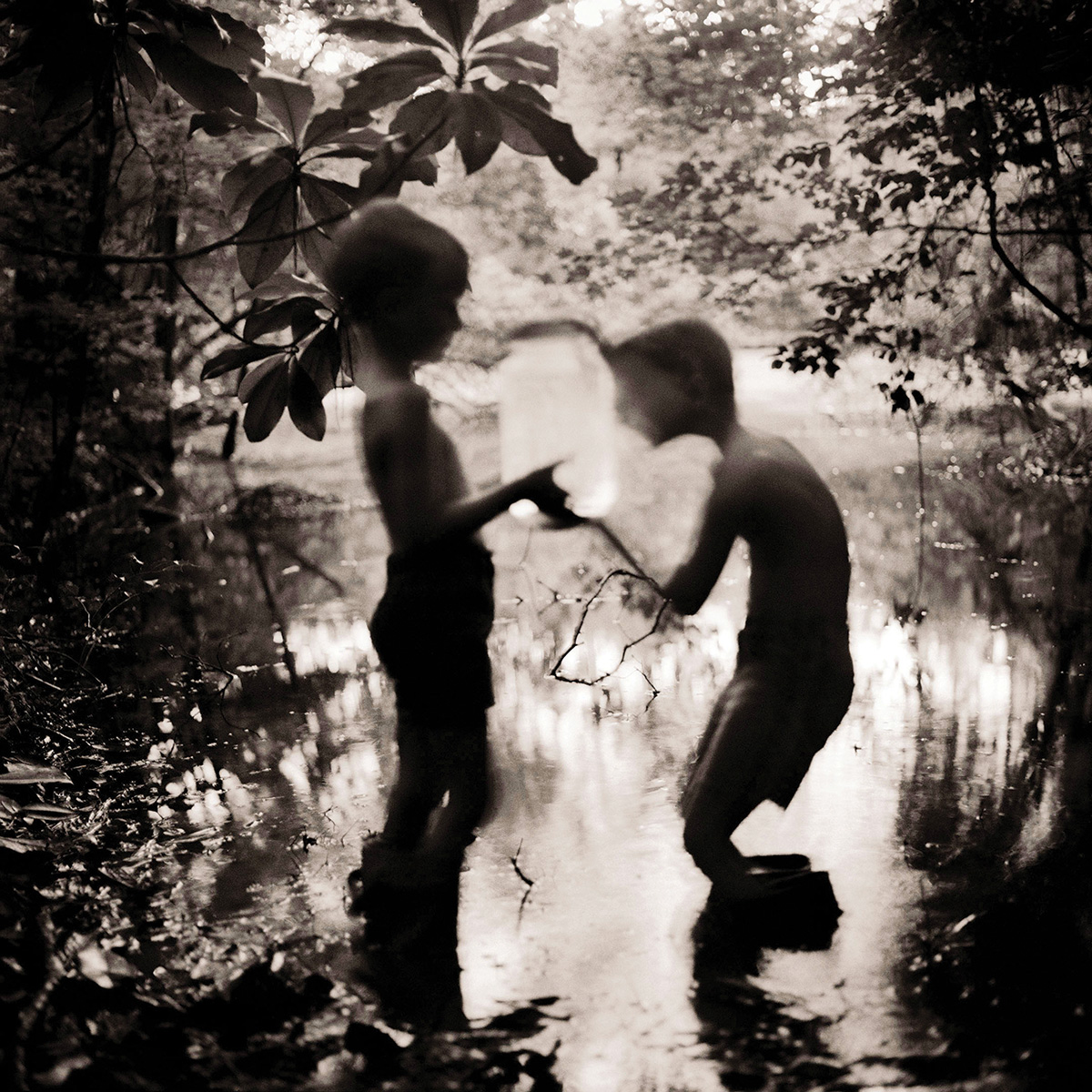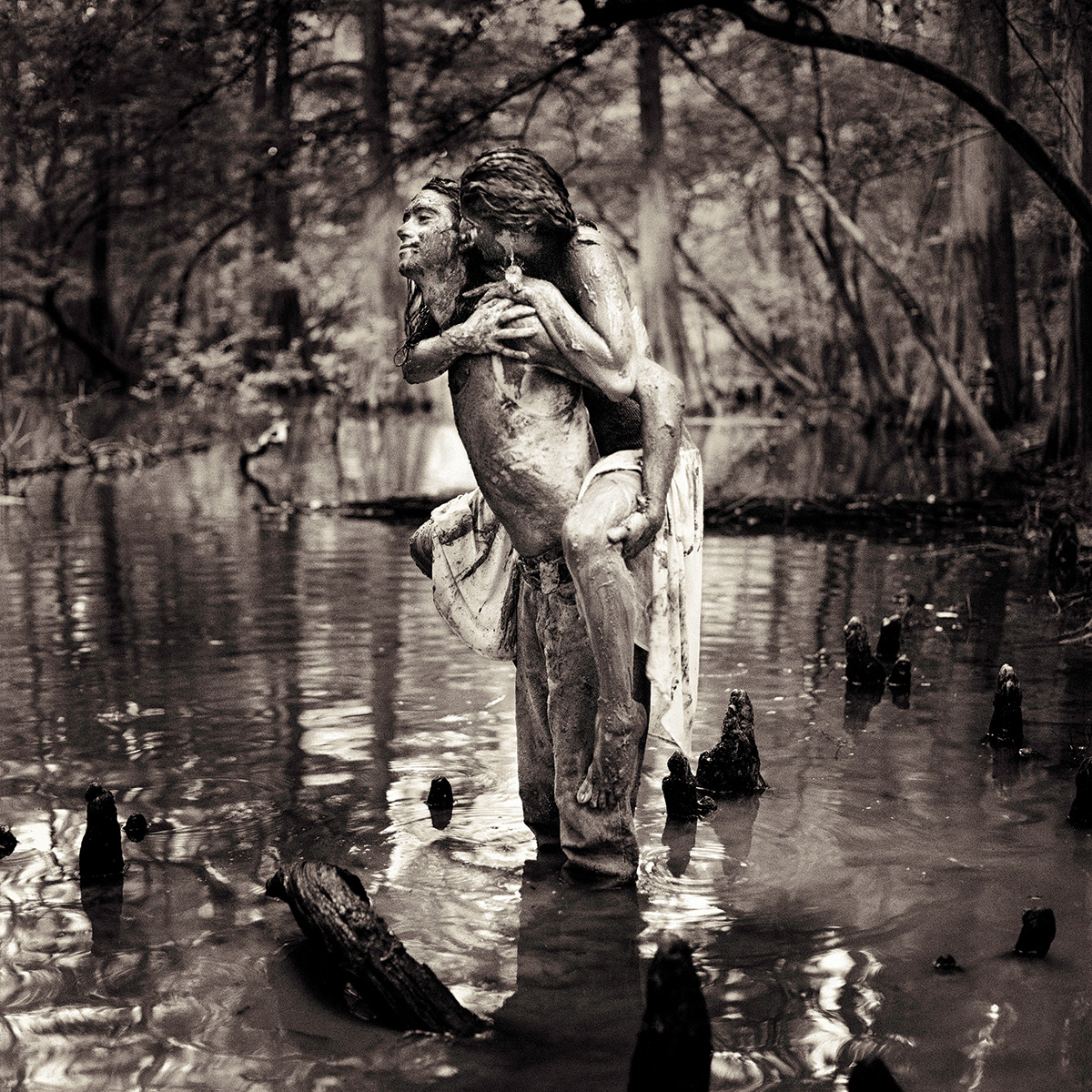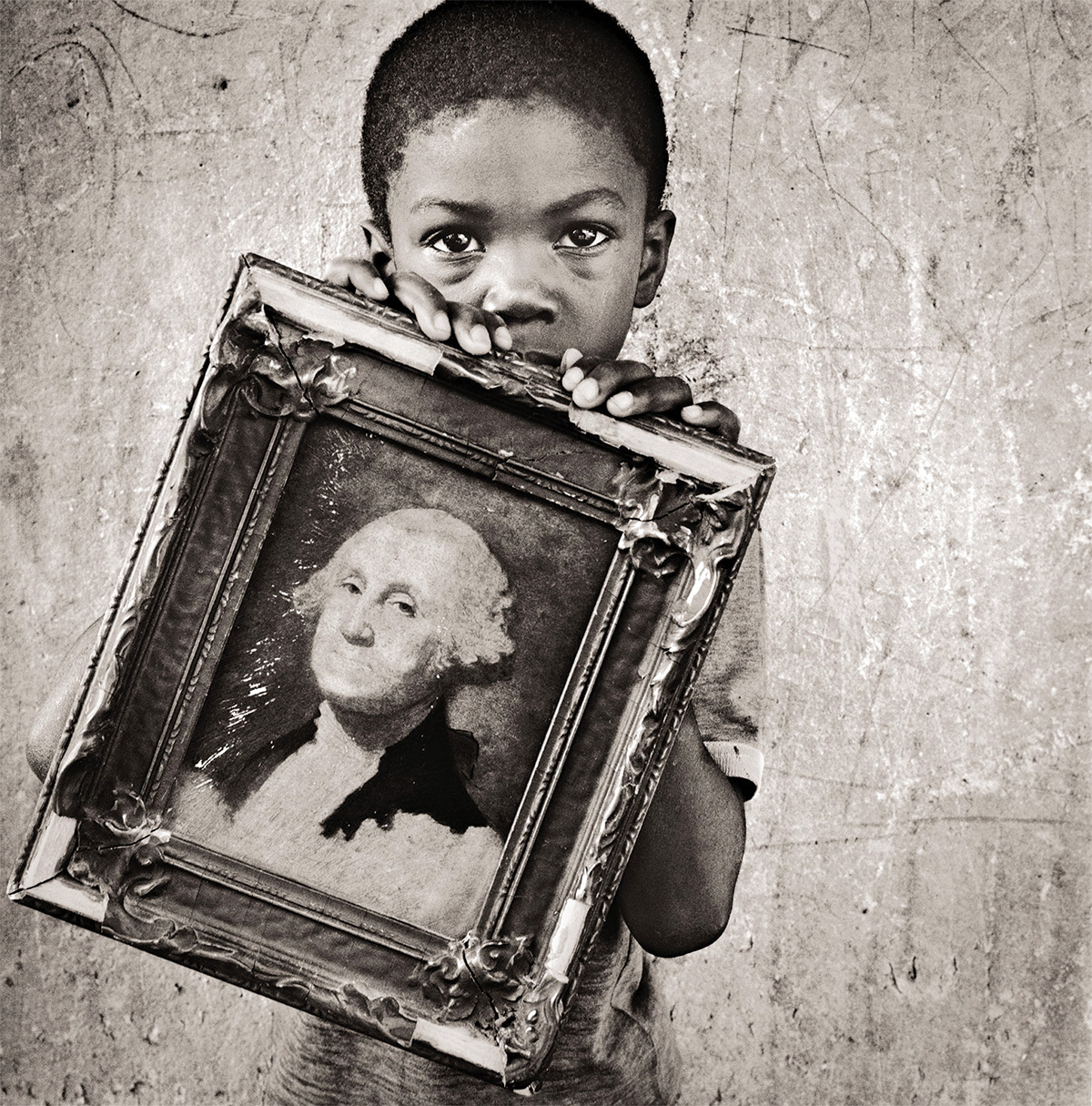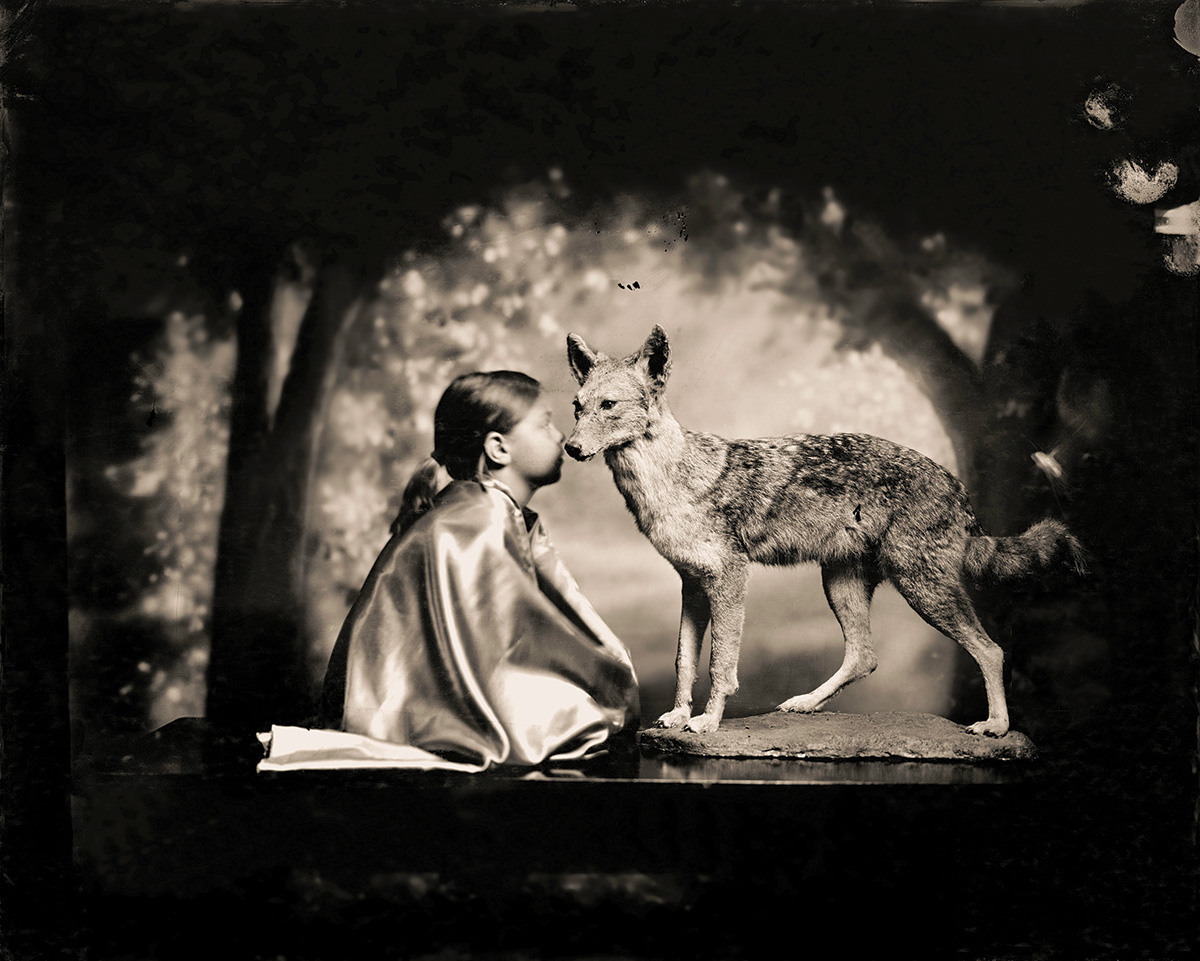Timely Epiphanies
Keith Carter has had a 50-year career of insights, and he's still finding inspiration.
• March 2021 issue
“It was a mistake. Really, it was a major mistake.”
Amazingly, that’s how awardwinning photographer Keith Carter describes the picture he took in 1992 that he’s long admitted “transformed the way I look at photography and ultimately changed my life.”
Carter, a trim 72-year-old who, despite a shock of thick gray hair, looks at least a decade younger, chats in his Beaumont, Texas, studio. “It is not an exaggeration to say that taking this picture, ‘Fireflies’ (below), resulted in a major epiphany,” he explains. He pauses, then smiles broadly as he recounts the day his career took off in a new direction.
“It was a warm, muggy day in 1992 and I had taken a group of students on a field trip to a nearby creek, where we spent the afternoon making photographs. One of the participants was a young woman who had brought her two boys with her,” remembers Carter.
“At the end of day these two little boys were down in the baygall—a swampy pond—catching fireflies, and I thought I could make a photograph of them. I had my Hasselblad 500C on a tripod because in those days I was always trying to make a good sharp photograph. I used a slow shutter speed and asked them to hold still but they totally ignored me and kept moving. But I made some photographs anyway.

”Fireflies”
“Back in my studio I processed the roll of film and was so disappointed because the images were so blurry. I went next door to our house to tell my wife, Pat, how upset I was and she asked me to bring her the contact sheet. I went back to the studio, brought her the sheet, and she said, ‘I think you ought to print one.’
“‘But they’re too blurry,’ I told her. ‘Well, just print one,’ she said.
“I went back to the darkroom, printed one, and brought it to her. She said, ‘Print it bigger.’ I complained, telling her it was out of focus. This back and forth went on until I printed a 20x24-inch print and asked her to come to the darkroom to look at it because it was too big to bring into the house.
“She looked at it while it was still in the tray and went silent. Then, she said ‘Oh! My! Gosh!’ I’ll never forget that moment of looking at her staring at the print. I still get choked up thinking of this. I hadn’t seen what she saw until I saw her reaction. Then I looked at the print and had the same response. I had been so set in my aesthetic. I knew what I was trying to do and knew I didn’t do it. But Pat’s reaction opened up a whole new world to me, a world that was purely photographic. I looked at the print and saw time actually passing, light actually moving. That opened up a whole new era, a new visual language to me at that moment. I then thought, OK! All bets are off. I can do just about anything.”

Keith Carter

"Mud Lovers"
While Carter, then 44, had already made a name for himself as a successful commercial and fine art photographer, “Fireflies,” which proved eminently popular as well as saleable, prompted him to change his technique. “I had already developed an interest in varied subject matter, but I soon changed the way I photographed. Instead of relying on a tripod, I started handholding my Hasselblad. I practiced shooting with it for hours and hours until it was second nature to hold it and operate it without the tripod I had been using.”
The success of the blurred image taught him another important lesson: “It convinced me to take the picture and figure it out later. I trust my intuition, and if I am drawn to something, I don’t intellectualize it at the time, I merely make the picture. You know, it is just a picture and if it doesn’t work, that’s fine. But you really will never know if it works unless you make it. Like Diane Arbus said, ‘I never have taken a picture I’ve intended. They’re always better or worse.’” (Arbus also said, “The thing that’s important to know is that you never know. You’re always sort of feeling your way.”)
Becoming Himself
Keith Carter was born in Wisconsin, raised in Beaumont, Texas, and fell in love with photography thanks largely to his mother, who was a children’s photographer. Although he earned a business degree in college, he preferred helping his mother in her small studio. A local museum director loaned him Henri Cartier-Bresson’s book, “The Decisive Moment,” and he was hooked. “I tried to copy him, and I immediately realized that I had so much to learn,” he remembers.
He wrote the Museum of Modern Art, explained that he was a photography student, and asked if he could come to New York City. “They said yes!” remembers Carter, and he reports that he “was on the next Greyhound to the Big Apple.”
For three weeks he pored over the works of photographers such as Cartier-Bresson, Eugène Atget, Paul Strand, Minor White, Ansel Adams, Wynn Bullock, and others. “Imagine it,” says Carter. “I was a 22-year-old kid from a small town in Texas and there I was in MOMA, holding in my hands—wearing white gloves, of course—prints by Adams and Cartier-Bresson. I was on fire, and I went back to Texas to make my own photographs.”
He readily admits, “It took me 20 years to become myself because I had to go through a lot of people whose work I admired and try to make pictures like they had.”
But his time in New York City taught him that the photography stars he emulated were not perfect. “At MOMA I noticed that their
prints were hand spotted. They were not perfect,” says Carter.
“I was relieved because my prints also had a lot of spots. This humanized my heroes and gave me a pinnacle I wanted to try to reach.”
He kept learning and improving. He took commercial assignments wherever he could find them, from local car dealers to small town stores. But he never stopped taking time to emulate his photography heroes with his personal work. Then, an epiphany.
One that would change his life.
"Until that moment, I’d thought a photographer had to go to somewhere exotic to produce important pictures, like Paris or the Arctic. But Foote changed my mind in an instant. I realized I belonged to a place. And what a place!"
Keith Carter
“It was like a thunderbolt from the heavens,” is how Carter remembers the afternoon he heard Texas-based, Pulitzer Prize-winning playwright Horton Foote speak at a film festival being held in Foote’s honor in Galveston in the late 1980s. “Foote explained that in order to make great art, one had to belong to a place.
“Until that moment, I’d thought a photographer had to go to somewhere exotic to produce important pictures, like Paris or the Arctic. But Foote changed my mind in an instant. I realized I belonged to a place. And what a place! It is flat, tangled, deeply green, hurricanes roll in, you have four out of the five poisonous snakes in North America. We have white Anglo-Saxon Protestants, Black imagination, Vietnamese industry, Mexican mythology, crackers, peckerwoods and rednecks, all in this gumbo culture. I sat bolt upright and almost shouted out, ‘My God, that should be my subject matter!’”
A year or so later, after he and Pat had crisscrossed southeast Texas, stopping in a hundred small, middle-of-nowhere towns to make a photograph in each, Carter’s first book, “From Uncertain to Blue,” was published. It received rave reviews. Horton Foote, who wrote the introduction, noted, “Keith Carter has the gift of taking things we have seen all our lives—a watermelon stand, a Black country church, a graveyard, a clothesline with chickens underneath, a country store—and giving them another dimension, a beauty that you can’t easily be rid of.” The Los Angeles Times dubbed him “The Poet of the Ordinary.”
The book brought Carter lucrative commercial and editorial work from the likes of Gap and The New York Times and helped reassure him that his personal work was appreciated. As one writer observed, “What he found in the process was creative license and freedom—and a whole new confidence in his own abilities as well. He knew now he could make a picture anywhere, anytime, and under almost any circumstances.”
“From Uncertain to Blue” was Carter’s first of 15 books. His most recent, “Keith Carter: Fifty Years,” was published in 2018. But it’s his first, which has been reprinted, that still holds a special place in Carter’s heart. “You know I’ve always been amazed that Robert Frank’s “The Americans” is still so popular, some 60 years after it was first published. I’m just as amazed that my little book, which started out as an anniversary present for my wife, Pat, has followed me for 32 years and made so much in my life so possible.”

"George Washington"
Paying homage
Carter turns 73 in June and shows no signs of slowing down. As he’s done for the past 32 years, he teaches photography at Lamar University, his alma mater, where he is Regents’ Professor and holds the endowed Walles Chair in Fine Arts. He has had a lifelong interest in the history of photography and enjoys lecturing on and practicing historic photo processing, such as wet plate collodion. “I always tell my students that they need to realize we are all standing on the shoulders of giants—those incredibly talented photographers who have gone before us,” he says. He also conducts photography workshops.
And he continues to evolve, tackling new projects because, as he explains, “I don’t want to repeat myself. I don’t want to make photos like I had before. In fact, I can’t because I’m not that person anymore.” Nearly a decade ago he was diagnosed with cancer, ocular melanoma, in his left eye, which left him with only partial sight in his affected eye after radiation treatments. “I was pretty upset when that was going on,” says Carter. “But we adapt, don’t we? I have depth problems, but it hasn’t slowed me down. I think my vision loss made me more appreciative of what we do have rather than what we don’t have.”
True to form, after Carter found his vision in his left eye to be “muddy or dirty,” he had another epiphany. “I decided to start using chemicals, calligraphy pens and knives to scratch my negatives, to produce prints that resembled my new muddied view of the world. I was destroying what was precious in the hopes that I could produce something I found intriguing.”
He adds, “I never know what I will get until I print the negatives; they take on a whole life of their own.” These dark, murky and muddled images that result also remind him of the early days of photography. As he says, “This is my way of paying homage to photography and the oddities of my vision.
“I’ve been lucky enough to have been making pictures for over half a century. It’s been an extraordinary and great life,” says Carter. He pauses, waits for a beat and then adds, “And you know what? It still is!”
Robert Kiener is a writer in Vermont.


-2004.jpg) View Gallery
View Gallery


